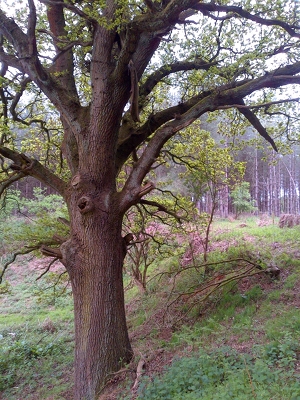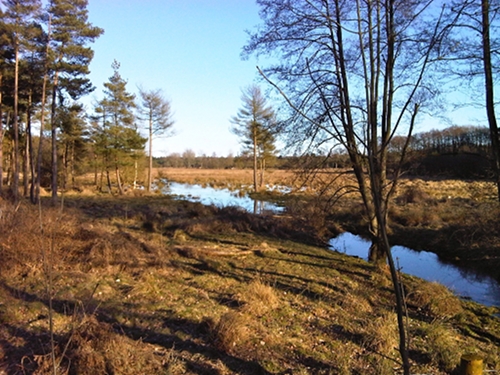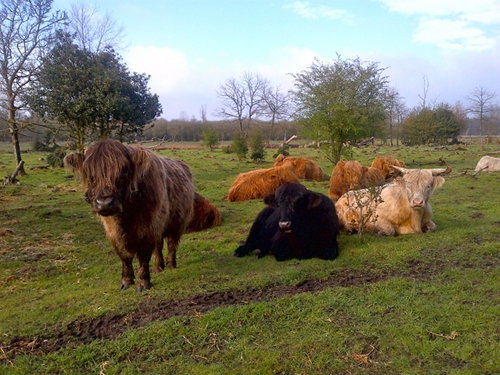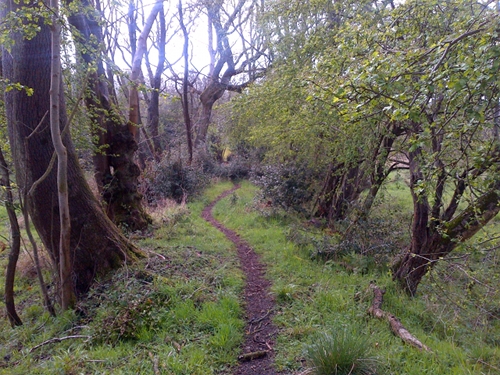by Alan Spidy, on behalf of the Friends of Thetford Forest
This is the fifth article in a series exploring the issues of heathland restoration by deforestation. Click here to view more article’s in the series: SOW – Heathland Restoration
The RSPB – and the other conservation NGOs like the Wildlife Trusts – have a long and noble tradition of campaigning for the natural world. We need them to keep Governments and industry from plundering our world’s resources and to encourage people to take personal responsibility for living sustainable lives.
So, although their initial response to the Public Forest Estate sale fiasco was deeply disappointing and perhaps signaled the loss of a radical campaigning edge as they became part of the establishment, it is encouraging to think that they are listening once again to ordinary people who care deeply for their local environments.
For the Friends of Thetford Forest, the over-riding concern is to protect the multi-functional aspect of our forest. A working landscape that provides real jobs in a real economy while at the same time providing almost unlimited public access and protecting vital habitats. The PFE can – and does – do it all!
Nobody would deny that heathlands are rare and important habitats and the RSPB’s article on this web-site is a welcome addition to the debate on their restoration. But they remain controversial, not only among local residents who see their favourite places radically altered with little or no consultation, but also among some experts who are beginning to question the whole strategy of heathland re-creation.
Across Norfolk and Suffolk many heaths have or are being restored by the Wildlife Trusts, private landowners and the Forestry Commission, often with the help of public funds (though not in the case of FC as they are expected to forego income from land given over to heaths and any applicable grants). Some of these include Grimston Warren, Holt Lowes, Marsham and Cawston Heaths, Brettenham Heath, Lakenheath Warren, Knettleshall Heath, Cranwich Camp, Brandon Park Heath, Santon Warren, Middle Harling Heath, Weeting Heath, Thompson Common, Barnham Common, Wether Heath and Dunwich Heath. Quite a number of sites! Many of these link up with other areas to provide large spaces for wildlife. And let’s not forget the vast expanse of the MoD’s Stanford Battle Area.

It’s not all pine! Many mature oaks grow all over the area, along with birch, chestnut and sycamore and shrubs like hazel, hawthorn and elder.
The 14% of the PFE mentioned by the RSPB as already open habitat is set to increase. Nationally, Forest Design Plans will add to this by a further 5%. This means that almost one fifth of an area of land that some dismiss as nothing more than a dark, dead mono-culture will play an essential part in maintaining this country’s bio-diversity – a substantial proportion by any standards. This does not include the Forestry Commission’s long-standing commitment to restoring all the PAWS (Plantations on Ancient Woodland Sites – another vitally important habitat) on its land. Indeed, such work fits exactly with Professor John Lawton’s report which put more emphasis on managing existing wildlife sites better, enlarging them where possible and improving connectivity rather than acquiring more.
So when the RSPB says “This does not mean chopping down places like Thetford Forest, but rather making the small areas of existing heathland bigger to form a more robust part of a varied habitat network” we would broadly agree. The Thetford Forest Open Habitats Implementation Plan – another example of FC’s pro-active attitude to managing landscapes for nature – is aiming to do just this but in moderation, so that a balance is maintained between the mosaic of habitats across the forest and heathland expansion is not achieved by a process of attrition.
But let’s put all this talk of heaths to one side for just a little while. Instead, let me take you to an almost unknown place that illustrates perfectly why the Public Forest Estate is such good value for the environment, people and the economy.
This place is called Cranberry Rough. Like all of Norfolk and most of the country, it shows the marks of human intervention over thousands of years. But Cranberry Rough was never quite tamed.

A view across Cranberry Rough from the abandoned railway line. In the wetter, open areas reed and sedge - including the rare Narrow Small-reed - support Warblers while among the dykes Little Grebe, Gadwall and Tufted Duck breed.
Close to its edge runs the ancient Peddars Way. Through it runs an abandoned railway line. Across it lie the scars of an unsuccessful 19th Century agricultural improvement drainage scheme. It is a naturally formed sphagnum moss basin, a rain-fed wetland in the heart of the dry, sandy Brecks. In Neolithic times it was a lake, fished by the early inhabitants of Norfolk. By Tudor times it had become Hockham Mere, when it still provided fishing and a source of food for the locals. Nowadays, following natural sedimentation, it is a rich wildlife habitat cared for by the Forestry Commission – trees have been cleared and the area kept open by a small herd of grazing Highland Cattle.

An unusual site in Norfolk! Highland Cattle graze the drier parts of Cranberry Rough to keep it free from scrub. In these areas Milk Parsley, Meadowsweet, Purple Loosestrife and Southern Marsh Orchid can be found.
Dotted throughout the area are relics from the end of the last Ice Age – small pools called pingos that are home to many rare plants and animals. Apart from the Norfolk Wildlife Trust’s Thompson Common next door, these wildlife oases have all but disappeared outside the PFE, having been ploughed out by modern agricultural practices.
However, Cranberry Rough and the surrounding area still perform the other functions of multi-purpose forestry. The commercial pine plantation supports the local economy and the modern rotational clear-fell operations provide temporary open spaces and connecting corridors for wildlife.

This raised bank across part of the wetland, edged with mature trees and shrubs, betrays an older form of land management while the well worn track across its top shows the signs of modern usage - dozens of walkers pass this way.
Thousands of people use the area each year for simple recreational access, walking the dog, riding horses, using the nearby picnic site, learning about the natural and human history all around them. They can do all this for free, without fuss, without being a member of any organisation and without anyone trying to sell them membership, without restriction on access and without feeling that they are merely an observer but are actually part of this landscape – something sadly missing on some more formal nature reserves.

Speedwell grows at the edge of a pine plantation. Beyond them, an area of clearfell slowly grows another crop while in the distance a stand of older trees nears its commercial maturity. This is the Public Forest Estate earning its keep in a sustainable way, providing temporary open spaces that benefit many species of flora and fauna.
The Public Forest Estate is about much more than offering an opportunity to replace one man-made landscape with another from an earlier age. It is about earning an honest living from the environment, looking after nature and encouraging everyone’s involvement with it. In short, it is about sustainably working our land and maintaining people’s connection with it. It is, after all, ‘owned’ by the nation – by us – and that is where it should stay.
Properly managed, properly resourced, properly ours.


























